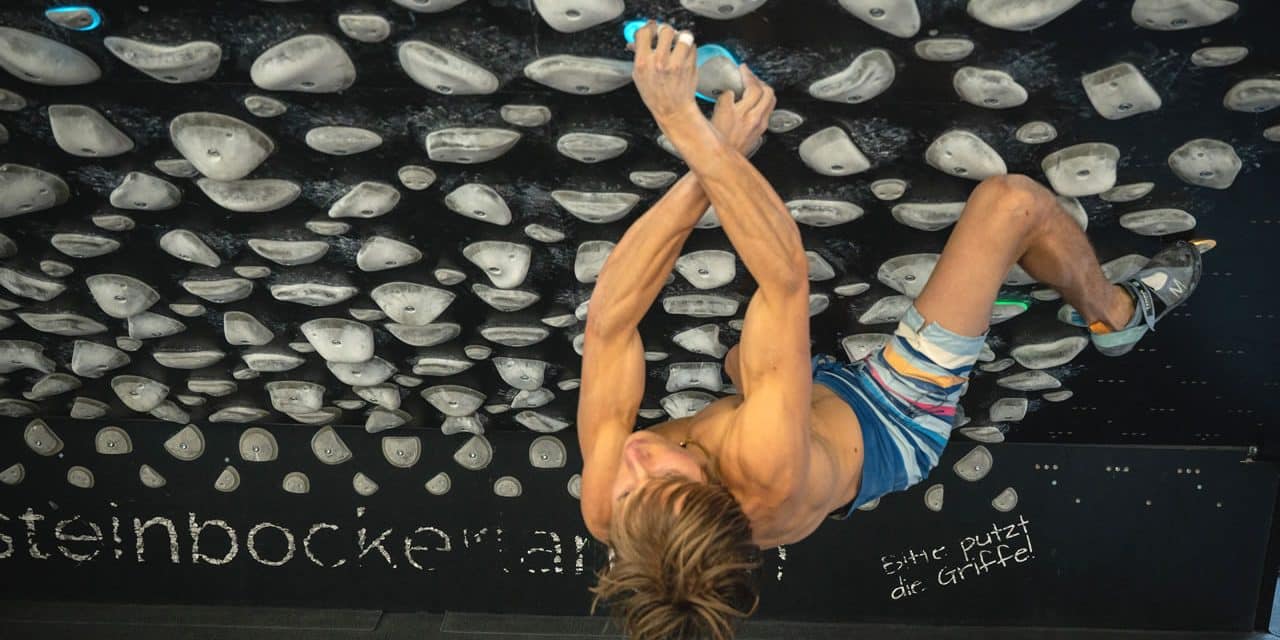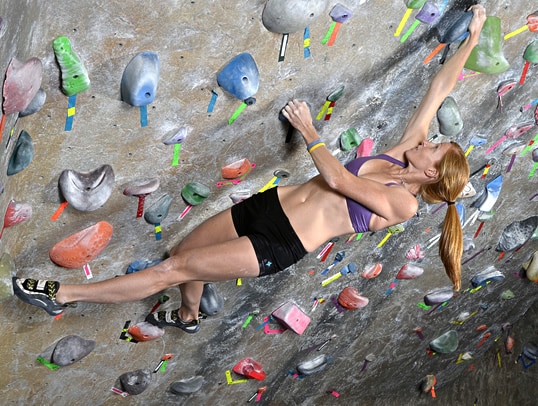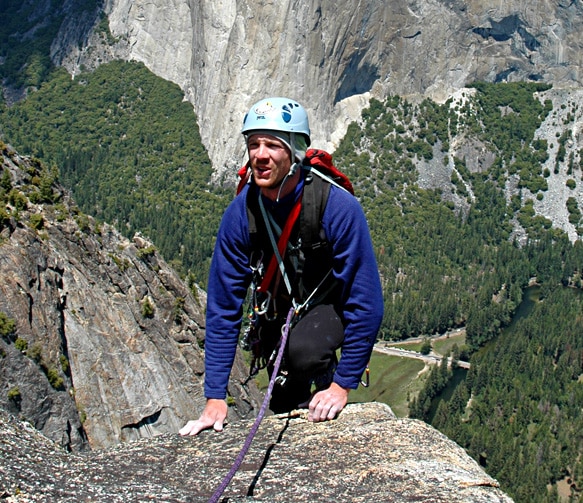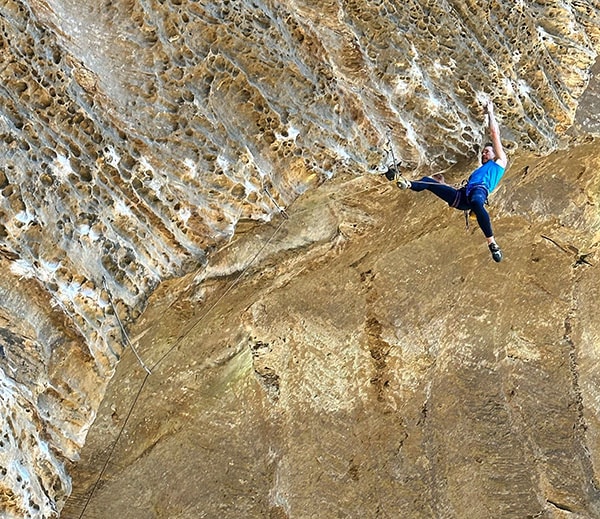Climbing requires well-rounded fitness. No matter your preference or speciality, a combination of both stamina and muscular endurance holds the key to optimal performance.
Let’s start with some definitions. It’s easy to conflate stamina and muscular endurance, when they’re actually two distinct skill sets. Stamina refers to an athlete’s ability to maintain a low to moderate level of intensity for an extended period of time, like when climbing a long route with a pretty consistent level of difficulty throughout. The challenge on these types of climbs comes from the length rather than any jarring cruxes at your limit.
Muscular Endurance, on the other hand, addresses the opposite: the capacity for engaging in bouts of high-intensity activity with brief breaks in between. Think repeated attempts on a hard boulder, a route punctuated by cruxes and rests, or even a more consistent climb that demands maximum effort from start to finish.
Most climbers will benefit from a combination of both stamina and muscular endurance. This is the case whether you’re a boulderer working on short-and-sweet climbs or a multi-pitch enthusiast in search of the tallest walls you can scale. No matter your favored terrain, you’re bound to find yourself out of your element at some point.
To ensure that you cover all the bases, incorporate exercises geared toward improving both energy systems into your training routine. Aerobic exercise targets stamina, while anaerobic training builds your muscular endurance.
When most people think of aerobic exercise, endurance activities like running and cycling probably come to mind first. And while it’s definitely helpful to hit the road (or trail) a couple times a week, there are also ways to build this kind of fitness through more climbing-specific methods.The same goes for anaerobic training.
The best way to train for climbing is by, well, climbing. Try these climbing-specific exercises that train the aerobic and anaerobic systems right there on the wall.
Aerobic Training for Climbing
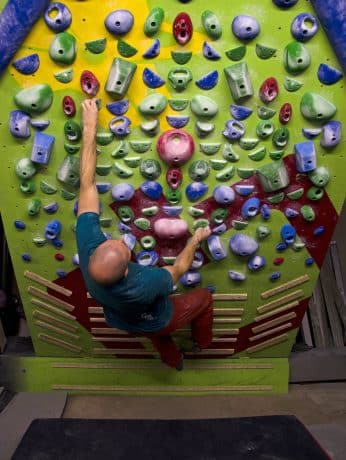
A systems board can be a convenient tool for training stamina. Combine time on the wall with traditional cardio for a circuit that targets your aerobic system!
A systems board can be a convenient tool for training stamina and aerobic capacity.When endurance athletes go out for a long run or ride, they’re not going all out. The goal is to find a pace that they could maintain all day long if they wanted to. Sustaining this kind of sub-maximal effort trains the body to use oxygen more efficiently so that they can go further and faster at the same level of effort.
In the context of climbing, this looks like completing a high number of relatively easy climbs over an extended period of time. You’ll definitely get the blood pumping, but try to avoid getting too pumped. Climbing to failure uses more aerobic energy than anaerobic. Shoot for a 6 to 8 out of 10 effort.
The best way to do this is to head out for a long day at the crag (or at a gym with a good selection of routes). You’ll naturally train the aerobic system as you rack up route after route. Setting the intention to accumulate as many as possible will put a natural cap on intensity, because it would be pretty impossible to climb at your limit from dawn to dusk. (And if you can, that’s not your actual limit!) Picking climbs about two number grades below your redpoint limit makes a smart starting point.
But while we all may dream of endless days on the rock, that’s not an everyday occurrence for most of us. You can train the aerobic system in the gym almost as well. Aim to complete as many routes or boulders in a two to three hour period as you can. Abide by the same guidelines of avoiding a deep, debilitating pump and opting for climbs well below your max. Continuous movement matters more than difficulty. Ultimately your goal is to climb a lot of mileage, all the while striving to avoid a blistering pump and muscular failure.
If you’re short on time, anything over 20 to 30 minutes still provides effective aerobic training. Choose steeper climbs that recruit a lot of muscle at one time for a more productive session. You can also combine cardio exercise with climbing for a short-and-sweet routine that’s still applicable to climbing. Pick your favorite way to sweat it out in the gym: treadmill, rowing machine, stationary bike, or even plain ol’ jumping jacks. Perform two minutes of cardio followed directly by two minutes of low-intensity climbing on the nearest wall or systems board. Repeat that cycle six times with no breaks in between rotations.
Anaerobic Training for Climbing

Use intervals on the treadwall to improve your muscular endurance and anaerobic capacity.
Now’s the time to up the ante. Anaerobic training is all about getting up close and personal with the pump. The goal here is to work hard, rest well (but not to complete recovery), then do it all again. That work will be pumpy and taxing but brief—just long enough that you brush up against your limits.
Go for intervals of hard work followed by an equal (or slightly longer) period of rest. In these workouts, it’s important to stick to a pretty strict time schedule. This helps you find the right intensity to last exactly the amount of time on the clock, getting blasted by the pump but not quite losing your grip, and get just enough rest in between to do it again while still tired from the last round.
The simplest anaerobic workout for climbers is intervals on the treadwall or systems board. Set your timer for one minute and go all out, to the point where you’re almost falling by the time the bell rings. Then, rest for four minutes. Repeat for six to eight cycles. These 1:4 intervals are gold!
Another option is the classic 4×4 workout. Select four boulders about two to three grades below your redpoint level. Climb the first boulder four times in a row with no rest in between; as soon as your feet touch the ground, you’re back on the wall. After those four repetitions, rest for three minutes. Then climb the second boulder four times followed by another three minutes of rest. Repeat on the final two boulders. If you’ve landed on the right level of difficulty, you should be on the verge—but not quite—falling on the third and fourth repsof the last two boulders.
A pyramid style workout makes things a bit more interesting. Start with one minute of climbing followed by one minute of rest. Increase to two minutes on and two minutes off for the next rep, then three minutes, then four. Work your way back down to one. First-timers to this exercise might want to start with just the first three, while more advanced climbers can add a fifth at the top of the pyramid.
Key Points:
- The aerobic energy system builds stamina, while the anaerobic system builds muscular endurance. Most climbers will benefit from proficiency in both.
- For aerobic training, stay under your max. The right level of intensity should be about two (number) grades below your redpoint threshold. Try to avoid getting pumped. Definitely no climbing to failure!
- For anaerobic training, aim for a hard effort paired with equal or greater rest (i.e. “Interval Training”). Time yourself to make sure that you reach the right effort level and amount of rest.
Related Articles:
- Training Cafe #69: Aerobic Training for Climbing
- Energy System Training Part One: Galactic Power Training
- Energy System Training Part Two: Anaerobic Lactic Training
- Energy System Training Part Three: Anaerobic Capacity Training
- Energy System Training Part Four: Aerobic Power
- Energy System Training Part Five: The Art of the Science
Copyright © 2000–2023 Lucie Hanes & Eric J. Hörst | All Rights Reserved.

